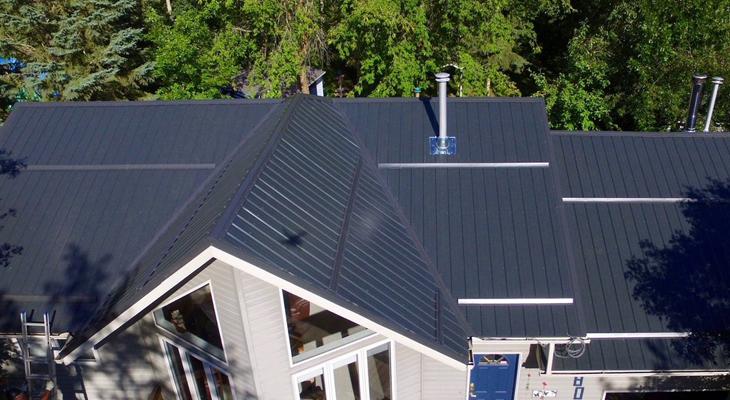When it comes to roofing materials, metal roofing is gaining popularity for its durability, longevity, and aesthetic appeal. However, one important factor to consider when choosing a roofing material is the weight. In this article, we’ll delve into the weight of metal roofing and explore the benefits and considerations associated with this roofing option.

The Advantages of Metal Roofing
Before we discuss the weight of metal roofing, it’s essential to understand why it’s such a popular choice among homeowners and builders:
- Durability: Metal roofing is renowned for its long lifespan. It can last 40 to 70 years or more, significantly outperforming many other roofing materials.
- Low Maintenance: Metal roofs require minimal maintenance. They are resistant to issues such as rot, insect infestations, and mildew.
- Energy Efficiency: Metal reflects the sun’s rays, helping to keep your home cooler in the summer and reducing energy costs. Additionally, many metal roofing materials are recyclable, making them an eco-friendly choice.
- Aesthetic Appeal: Metal roofing comes in a variety of styles, colors, and finishes, allowing homeowners to choose a design that complements their home’s architecture and their personal preferences.
Weight of Metal Roofing
Metal roofing is relatively lightweight compared to some other roofing materials. The weight of a metal roof can vary depending on the type of metal used and the specific profile or design of the roofing material. Here are some common metal roofing materials and their approximate weight per square foot:
- Steel: Steel roofing is one of the most common types of metal roofing. It typically weighs between 1 to 1.5 pounds per square foot, making it one of the lighter metal roofing options.
- Aluminum: Aluminum roofing is even lighter than steel, weighing in at about 0.5 to 1 pound per square foot. This makes it an excellent choice for those looking to minimize the weight on their roofing structure.
- Copper: Copper roofing is heavier than steel and aluminum, with an approximate weight of 1.5 to 2.5 pounds per square foot. While it’s heavier, it offers a unique and elegant appearance.
- Zinc: Zinc roofing is similar in weight to copper, ranging from 1.5 to 2.5 pounds per square foot. It is known for its long lifespan and corrosion resistance.
Benefits of Light Weight
The relatively light weight of metal roofing offers several benefits, including:
- Structural Integrity: The lightweight nature of metal roofing puts less stress on your home’s structural supports. This can be particularly advantageous in regions prone to heavy snow loads or for homes with older structures.
- Easy Installation: Roofers appreciate working with lightweight materials because they are easier to handle and install. This can lead to quicker installation times and lower labor costs.
- Reduced Maintenance: The weight of metal roofing puts less strain on the underlying structure, resulting in fewer maintenance issues over time.
Considerations for Heavier Metal Roofing
While lighter metal roofing materials are suitable for most applications, there are situations where a heavier option may be more appropriate. For example, in areas with high wind conditions, a heavier metal roof can provide better wind resistance. Additionally, some homeowners prefer the substantial feel of a heavier roofing material like copper for its aesthetic appeal.
Conclusion
The weight of metal roofing is an important consideration when selecting the right roofing material for your home. Lighter metal roofing materials offer several advantages, including reduced stress on the structure, easier installation, and lower maintenance. However, it’s essential to balance the weight factor with other considerations like climate and aesthetic preferences. Ultimately, the choice of metal roofing material should align with your specific needs, taking into account the climate and environmental conditions of your region, as well as your desired appearance and durability. Metal roofing’s combination of low weight and high performance makes it a compelling choice for many homeowners seeking a long-lasting and energy-efficient roofing solution.



Leave a Reply